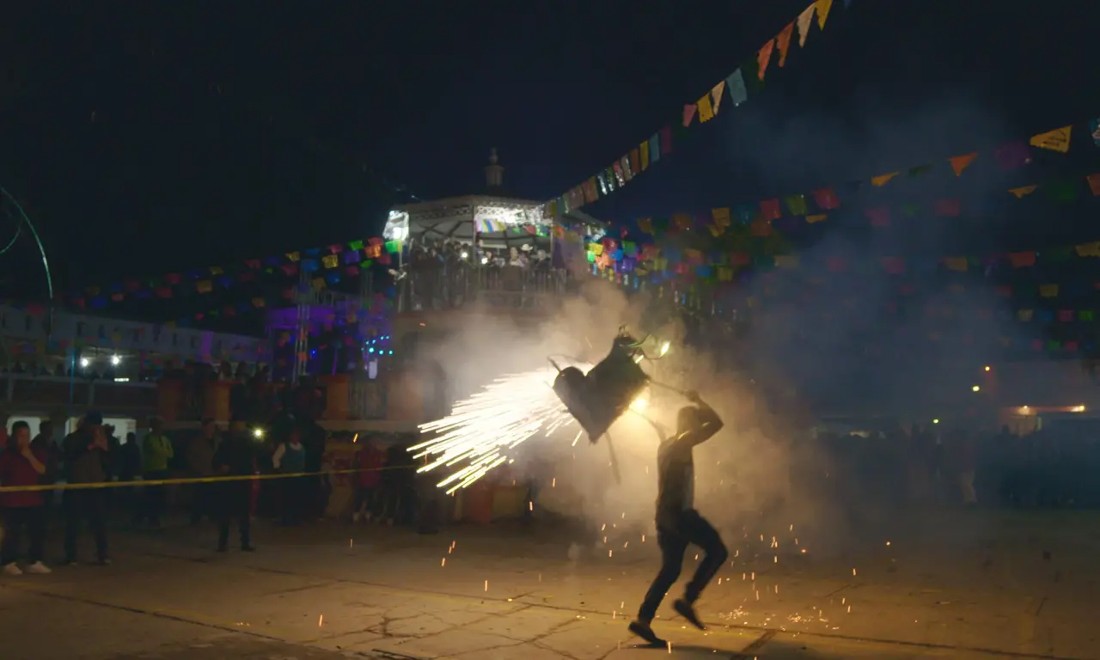
by Jeffrey Sipe
Oaxacalifornia Revisited
Spanish and English with subtitles in both
Director: Trish Ziff
Thursday, October 13, 6pm
Saturday, October 15, 8pm
In 1994, Mexican director Trish Ziff produced her first documentary, focusing on the travails of the Mejia family from Oaxaca as they settled in Fresno, California and adapted to a new cultural and economic reality. Twenty-five years later, Ziff has revisited the Mejia family, now three generations strong in California, and still grappling with the nature of dual nationality and the bicultural terrain that continues to be an integral part of their lives.
Oaxacalifornia Revisited is especially poignant and effective in presenting the story of the Mejias because the members of the family that we come to know are especially sympathetic and likeable. From the couple, now grandparents, who planted the family in Fresno, to the youngest members of the clan, who are now second-generation Americans, all display not only a sense of humor about their transplanted lives but also serious contemplation of their Mexican-American identity.
The youngest generation, understandably, rebels against what they feel is a forced decision to declare themselves either "Mexican" or "American". In large part, one young man says, their friends and family in Mexico imagine that they have shirked off their Mexican identity and are consumed in Fresno by hamburgers and dollars while their American friends believe they are serious consumers of tacos, rice, beans and everything Mexican.
"Why can't we be both, Mexican and American?" asks one of the younger members of the clan in what, in the end, seems to sum up the central message of Oaxacalifornia Revisited.
It is a simple question, and the answer – "why not?" – seems apparent, but there are significant hurdles to clear. One girl recounts being made fun of at school because of her Mexican background, so much so that she stopped speaking Spanish to deflect the taunts. Another first-generation American tells of her mother criticizing her for not speaking Spanish with her own young daughter. At the same time, however, members of the newest generation of Mejias happily engage in traditional Mexican dance as well as helping their grandmother cook mole and tamales.
The opening scene, in many ways, encapsulates the complexity of what in the US (and around the world) is a common situation. We watch as the youngest generation sit in their immigrant grandparents' home and watch old home movies of their parents and grandparents, often laughingly commenting in colloquial American English on the images from the past. It is an interestingly mutual reflection of these very different, yet, intrinsically connected generations.
The plight of immigrants and the often-difficult assimilation to a new culture and way of life is hardly limited to Mexican immigrants to the US. But with more than 37 million Americans of Mexican descent, and given the artificial line drawn in the sand between the two countries, this particular migration is especially significant. It is also especially significant that Oaxacalifornia Revisited is a US-Mexico coproduction, made with support and money from government and private foundations on both sides of the border.
The film is not likely to leave you in tears, but it is a welcome and sincere depiction of the human side of crossing the border, without the vitriol that is coming increasingly from "over there."
*****
Compartimento Cinematográfico is at Mezcal Art
next to Immigration on Calzada de la estación.
Admission is free.
See more from
Compartimento Cinematográfico
on Lokkal's full
movie schedule
**************

Jeffrey R. Sipe is a writer/journalist, who, no matter how hard he writes, having grown up in Speedway, Indiana, still can’t get the sounds of race cars rounding Turn 4 out of his head. He has written about the film industry for Variety, The Hollywood Reporter, Sight and Sound, The Financial Times and other publications. He also once worked as the “boom guy” on a film that nobody saw, but he challenges everyone to see just how long they can hold a metal tube with a microphone attached over their heads.
**************
*****
Discover Lokkal:
Watch the two-minute video below.
Then, below, scroll down through SMA's Community Wall.
Click "Start" to register and post.
Intro / Mission

Visit SMA's Social Network
